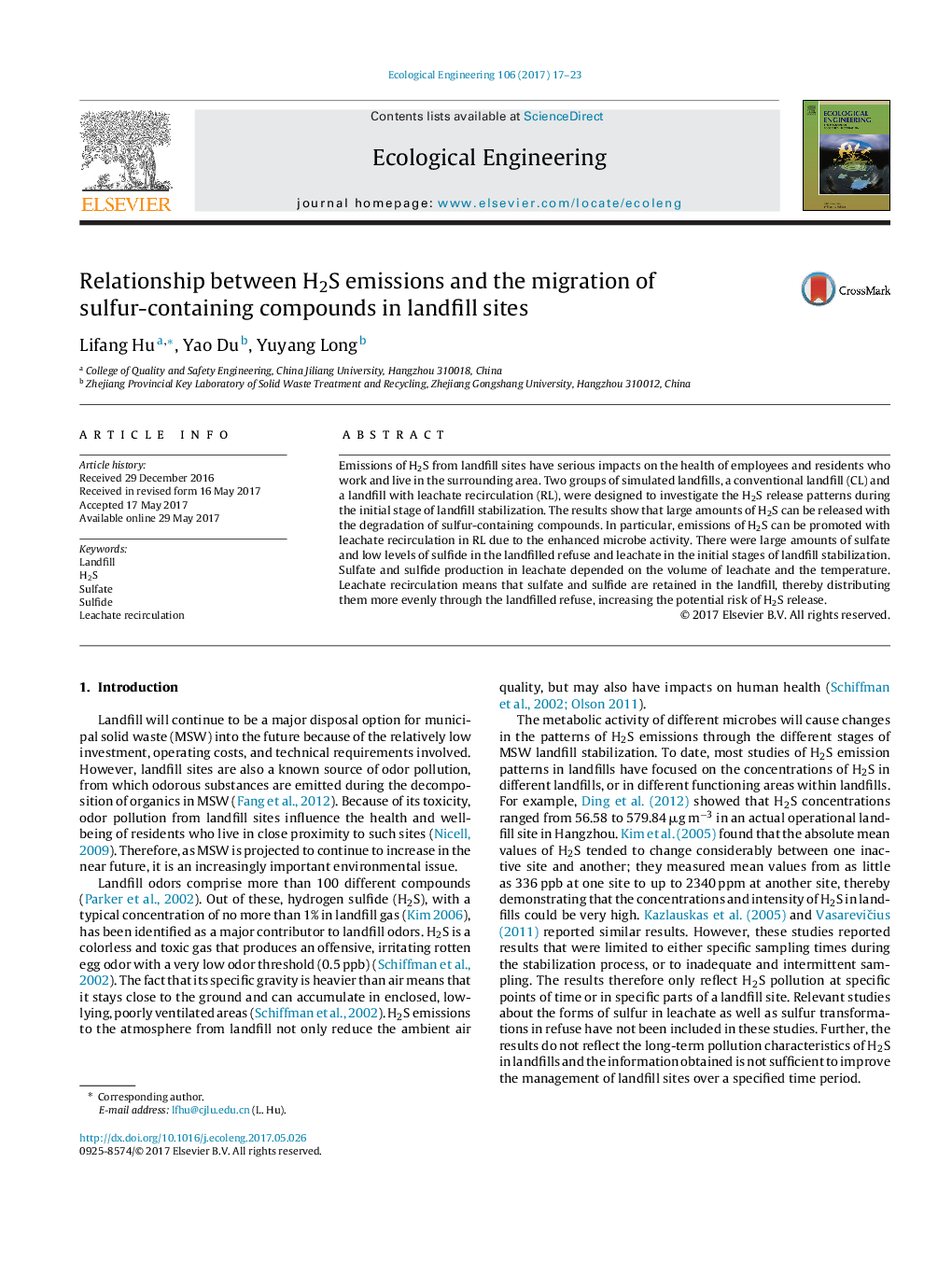| Article ID | Journal | Published Year | Pages | File Type |
|---|---|---|---|---|
| 5743818 | Ecological Engineering | 2017 | 7 Pages |
Emissions of H2S from landfill sites have serious impacts on the health of employees and residents who work and live in the surrounding area. Two groups of simulated landfills, a conventional landfill (CL) and a landfill with leachate recirculation (RL), were designed to investigate the H2S release patterns during the initial stage of landfill stabilization. The results show that large amounts of H2S can be released with the degradation of sulfur-containing compounds. In particular, emissions of H2S can be promoted with leachate recirculation in RL due to the enhanced microbe activity. There were large amounts of sulfate and low levels of sulfide in the landfilled refuse and leachate in the initial stages of landfill stabilization. Sulfate and sulfide production in leachate depended on the volume of leachate and the temperature. Leachate recirculation means that sulfate and sulfide are retained in the landfill, thereby distributing them more evenly through the landfilled refuse, increasing the potential risk of H2S release.
